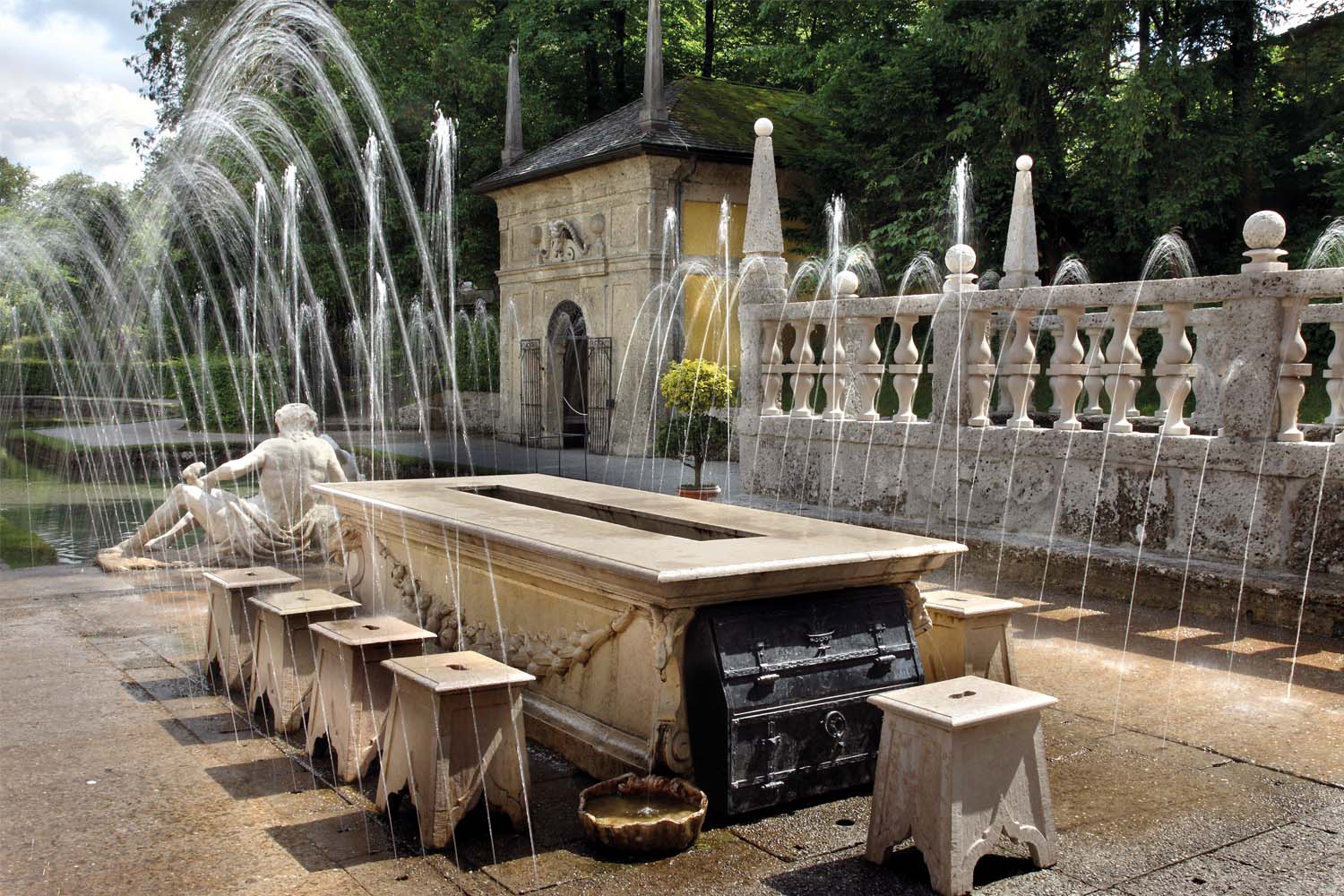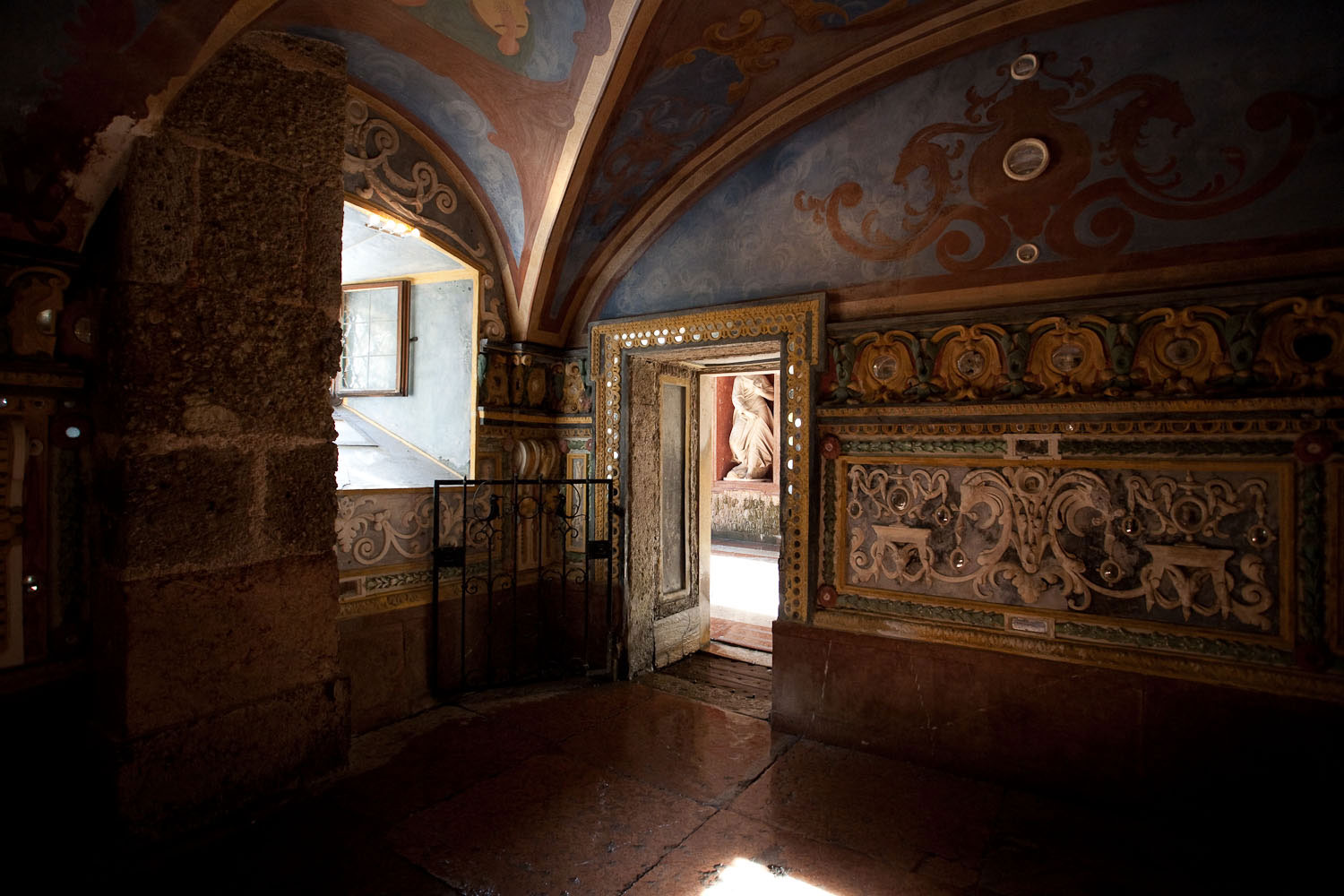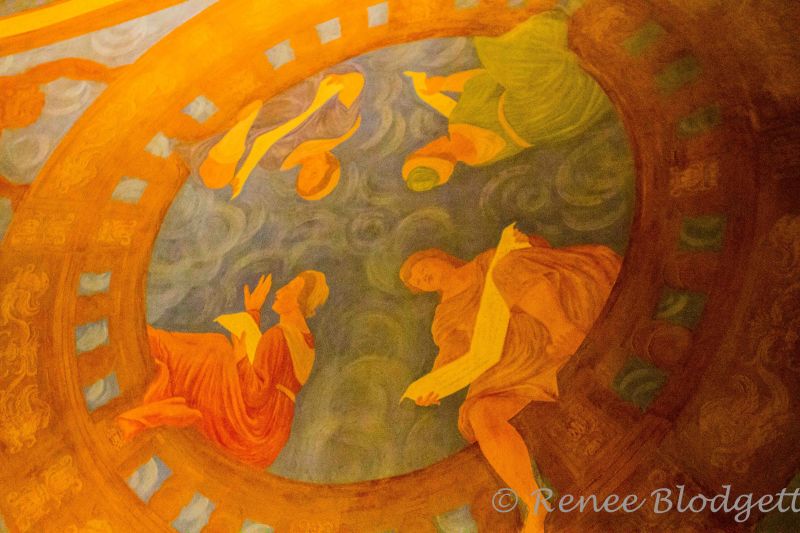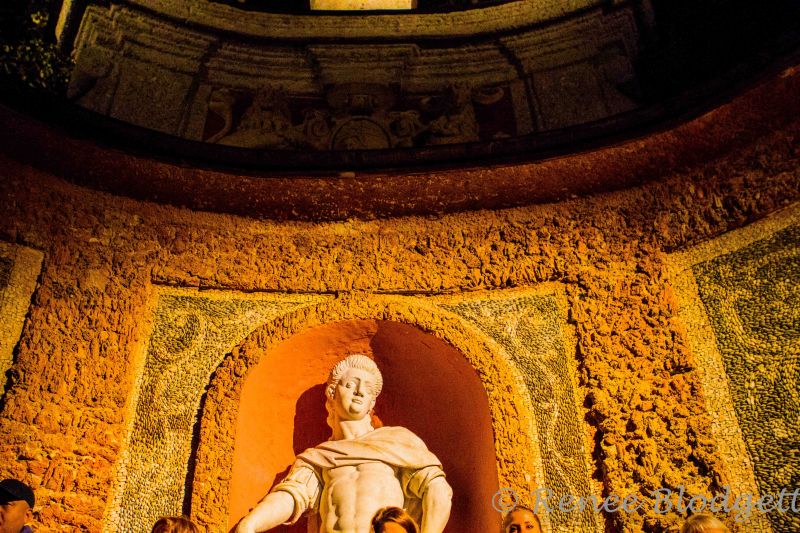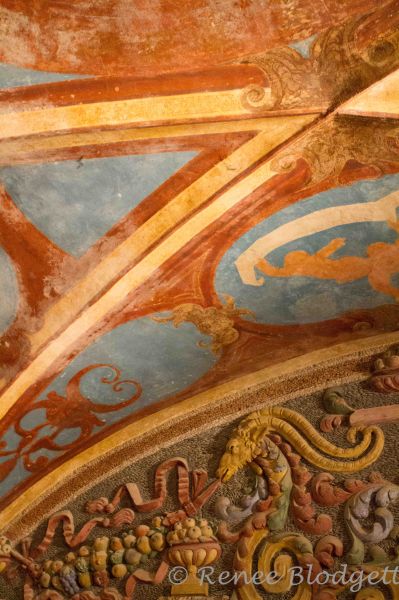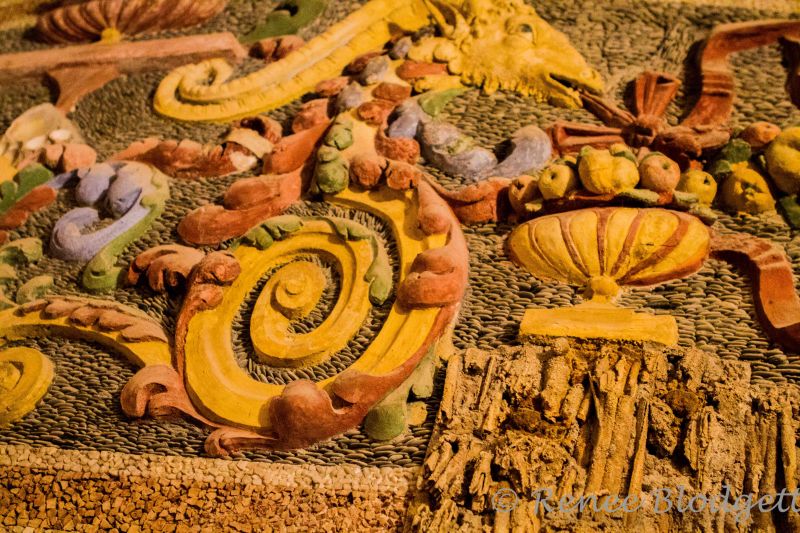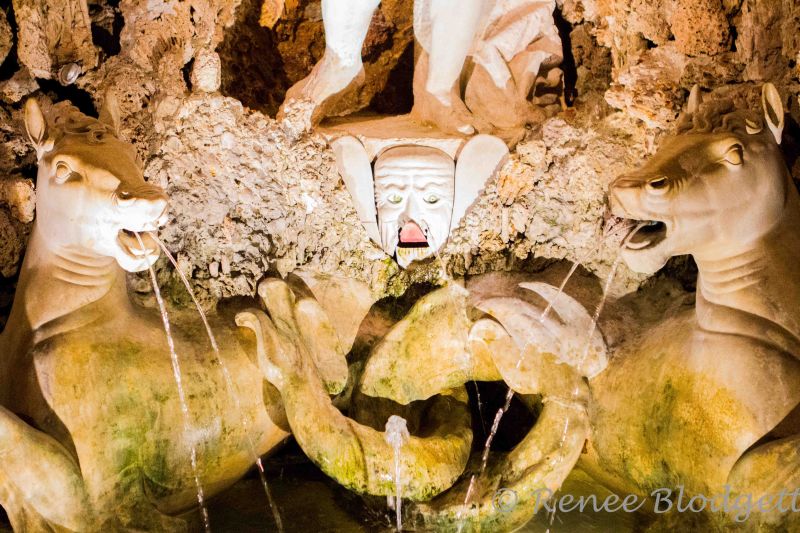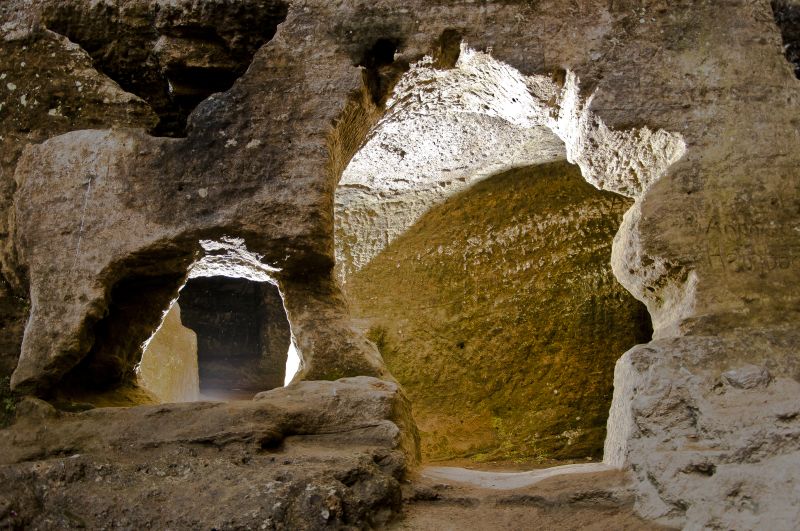Let’s face it, who’s not drawn to water? It’s the number one source that keeps us alive and our bodies are made up of more water than anything else. Inevitably, this is the reason we love oceans, lakes and fountains so much and are naturally drawn to natural sources of water.
Historical Hellbrunn Palace in Salzburg Austria had water as a defining element in the design of the palace from the very beginning. The fountains and water jets can be enjoyed almost exactly the way they were intended 400 years ago – as entertainment for the archbishops – and still include secret and mystical grottos, water-powered figures and hidden jets of water around every corner. Outside, you can meander through the palace and take in the majestic nature of the Palace itself with its numerous fountains, all of which have “tricks” connected to them.
Hellbrunn is a veritable jewel with not just decadent fountains, but a spacious park that combines artificially landscaped park land and natural biotopes. The water games and trick fountains are a truly unique experience where you will constantly expect the unexpected as you go on a tour of the grounds, which we did by night, which adds mystery to the experience.
The ‘Lustschloss’ was a pleasure palace built for staging festivities, for enjoyment and relaxation. Originally, this was a privilege reserved for the archbishops, although today it’s open to anyone who wishes to stroll around the park, enjoy the fountains and hidden water jets, or celebrate in the magnificent halls of the palace.
The Salzburg Prince-Bishop Markus Sittikus ordered the building of a summer residence at the foot of the naturally irrigated hill in Hellbrunn between 1612 and 1615. During this relatively short period, an architectural jewel was erected in the popular Italian style of the age. It is still considered one of the most splendid Renaissance buildings on the northern side of the Alps. Its purpose was to foster the enjoyment of life, to provide pleasurable distractions and entertainment.
Since March 2015, three rearranged rooms have been on show: the music chamber, the ‘Fasnacht’ room and the ‘Festival Hall’. They are first of a total of ten rooms that are to house the ‘Markus Sittikus – My view of the World’ exhibition over the next few years.
In addition to the tricks you’ll be surprised by from the fountains, the real magic for me came from spending time inside the rooms, which bring you back to another place and time — the ornamental artwork and attention to detail will wow you over.
In some rooms, the walls and ceilings are made of shells – in all cases, Greek Mythology is depicted as a way to tell a story. And, despite its 400 year age, the colors are still vivid and intoxicating, even when you visit the rooms that are almost cave-like, by night. The below shots were taken without flash when it was dark outside.
Outside, you’re faced with this lit up image at night as you walk along the path that takes you through the Palace gardens.
The Mystery of the Grottos
Imagine a time in jolly court society where there’s a flickering light of hundreds of candles and torches, carried by ghostly servants and posed in one of the five grottos: The Neptune Grotto, the Ruins Grotto, the Shell grotto, the Mirror Grotto and the Bird Call Grotto.
The Bird Call Grotto is where ten different bird calls are heard from several niches in the tuff coating in the walls. One would imitate these bird calls today with a simple tape-recording, but at the time, required a large room on the north side of the palace containing the entire mechanism of the eight water-pipes and three dry pipes to be effective; they used a vertical waterwheel driven by a jet of water from above. The wheel moves the bellows, which drives the wind into the sound-board of an organ works. These works are then driven by a turbine-like waterwheel mounted horizontally on the floor, which turns the pin roller four times each minute.
The pin roller carries eleven rows of pins for the eleven bird calls. Valves are opened by the pins when the roller turns, which then allows the pressurized air access to the pipes outside in the grotto. The air passes though lead pipes and the feet of the pipes, which are hidden in the grotto, are dipped into water containers. The water in the containers is always kept at the same height through an exactly regulated inflow and outflow and when the pipe responds, air flows out through the water resulting in bird calls that resemble the gurgling of water.
The original system of 1613 contained only the calls of three birds. The works of today are from Hradil, the fountain master. Parts of an old organ works by Sautner of circa 1830 still exist. At the fountains of the Neptune Grotto, its unnerving to see the Germaul, a tin, water-driven grimacing face, which rolls its eyes and pokes its tongue in disrespect at you. This gets a little eerie if you stare at it for too long…it feels just a little too “real.”
A first sample of the countless hidden jets and pipes happens at this grotto when you get a downpour with a rainbow! D. Gisberthi wrote in 1670: “One does not allow oneself to be insulted without joy and pleasure, and must nevertheless laugh despite the lack of politeness.” When one turns away from the palace to the north where the park becomes suddenly narrow, somewhat gloomy and almost intimate, there is a very different effect than the loud screams from the surprises you receive at every turn.
It wouldn’t be the Hellbrunn trick fountains if there were no cascading, needle-thin water jets, which following their absorbed rapture brings you back to reality when you least expect it. Another attraction when strolling among the trick fountains is the Midas Grotto, or Crown Grotto, in the middle of which a bursting jet of water raises a crown, and according to the pressure, holds it almost immovably at a particular height. It will startle you as you walk through, as the water jets inside this grotto begin to shoot from wall niches. Alas, more tricks for the taking when you experience the trick fountains, so expect to be surprised again and again.
Europe’s Oldest Outdoor Theatre
Markus Sittikus had the rock quarry in Hellbrunn transformed into what is now Europe’s oldest open-air theatre, subsequently known as the ‘Steintheater’. The Hellbrunn ‘Monatsschlösschen’, its real name being Waldems. Today, it is home to the Volkskundemuseum run by the Salzburg Museum, where exhibits include a whole collection of Salzburg’s most attractive ‘Tracht’ outfits for men and women. How cool is that?
Photo credit: www.commons.wikimedia.org.
The 5 Hellbrunn Water Automats
The automats are so interesting, I thought I’d include the history behind them in depth so you can put it into context. These five water automats on-site or rather five small grottos are arranged unspectacularly on a narrow path, as the so-called Royal Way shows, and depict small genre scenes from Greek mythology and the local artisan scene. The inherent technology remains completely hidden from the observer, one sees only small dolls, which carry out their movement to an infinitely uniform rhythm, which are delightful to watch and of a touching simplicity. The pumps that provide these technical works of wonder with water are hidden in a hill of tuff at the beginning of the path that is fringed by a narrow channel.
In the first grotto, the grinder, his wife and child are shown in his daily work. The grinding wheel is apparently turned by the woman who moves her upper body, head and arms. The grinder in the background to the left does not move. The child lying at the front on the ground spits water. In the next grotto we see the mythological scene in which Apollo flays Marsyas. Apollo can be turned on the axis of his right leg and he takes the right arm of Marsyas with him as he moves. Apollo’s right arm makes a cutting movement. Marsyas shakes his head in despair. Grotto number three accommodates the miller at his work. He does not move himself. The mill wheel in the background turns from left to right.
The flour, which appears to fl ow from the miller’s bucket on to the millstone is imitated by a white spiral of tin. It turns from above to below as an extension of the millstone axis. The lower part of the fl our imitation is turned independently. The clattering of the mill is created in the box below the millstone. In grotto four we see Perseus and Andromeda. In the middle of the background is Andromeda who is bound naked to the rock. The figure does not move. The dragon in the foreground moves from left right. When the dragon has reached the middle, Perseus emerges from the right raising a shield and sword.
The hero drops his shield and sword when reaching the dragon and both figures return to their respective starting point. The works in this grotto has the most complicated technology of all. The movement of the dragon is provided by the vertical well of a crown wheel, which is driven via a small cogwheel on the waterwheel well. A larger cogwheel on the waterwheel well drives a wheel, which raises the arms of Perseus via a lever and a wire and via an eccentric wheel simultaneously brings Perseus to emerge.
Grotto number 5 shows the potter in his workshop, which contains the most delightful examples of his art and craft. The potter’s wheel turns from left to right. The potter’s right hand first makes a small upward movement, then both hands and the head make stronger upward movements, which indicates the typical throwing of a tall vessel. His head also moves. His right foot is moved by the wheel by means of a cog. Machine construction, a “divine” art The development of mechanism during the Renaissance goes back to the examination of writings of the Antiquity. (Archimedes, Aristotle, Pliny and Vitruvius).
Due to the great interest in natural science, which during the cinque cento not only encompassed the provision of drinking water and the building of baths, but was also dedicated much more to the love of life and intellectual challenge, which resulted in the most diverse air and water-driven automats, machines and organs.
The technical games became more and more intricate and what was fascinating was the realization of an effect of hidden origin. The art of machines appeared to be a “divine art”, similar to a crowning imitation of nature, even triumph over it, and finally achieved by the respective ruler.
Read my Salzburgerland overview, which includes the Hellbrunn Palace and Trick Fountains as well as a host of other things you can experience in the region. For foodies, don’t miss my Salzburg Food and Restaurant Guide. Also refer to my Cultural Guide to Salzburg.
DETAILS:
Hellbrunn Palace & Trick Fountains
Fürstenweg 37 |
5020 Salzburg Austria

Renee Blodgett is the founder of We Blog the World. The site combines the magic of an online culture and travel magazine with a global blog network and has contributors from every continent in the world. Having lived in 10 countries and explored nearly 80, she is an avid traveler, and a lover, observer and participant in cultural diversity.
She is also the CEO and founder of Magic Sauce Media, a new media services consultancy focused on viral marketing, social media, branding, events and PR. For over 20 years, she has helped companies from 12 countries get traction in the market. Known for her global and organic approach to product and corporate launches, Renee practices what she pitches and as an active user of social media, she helps clients navigate digital waters from around the world. Renee has been blogging for over 16 years and regularly writes on her personal blog Down the Avenue, Huffington Post, BlogHer, We Blog the World and other sites. She was ranked #12 Social Media Influencer by Forbes Magazine and is listed as a new media influencer and game changer on various sites and books on the new media revolution. In 2013, she was listed as the 6th most influential woman in social media by Forbes Magazine on a Top 20 List.
Her passion for art, storytelling and photography led to the launch of Magic Sauce Photography, which is a visual extension of her writing, the result of which has led to producing six photo books: Galapagos Islands, London, South Africa, Rome, Urbanization and Ecuador.
Renee is also the co-founder of Traveling Geeks, an initiative that brings entrepreneurs, thought leaders, bloggers, creators, curators and influencers to other countries to share and learn from peers, governments, corporations, and the general public in order to educate, share, evaluate, and promote innovative technologies.



